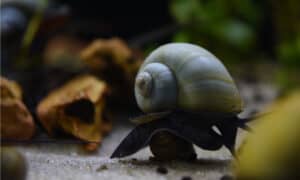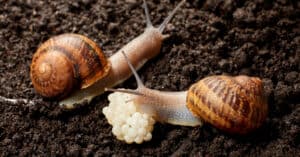In this article, we delve into the world of snails! While many people assume that these tiny little guys are just slugs with shells, these creatures are actually quite fascinating. Keep reading to learn 10 incredible snail facts!
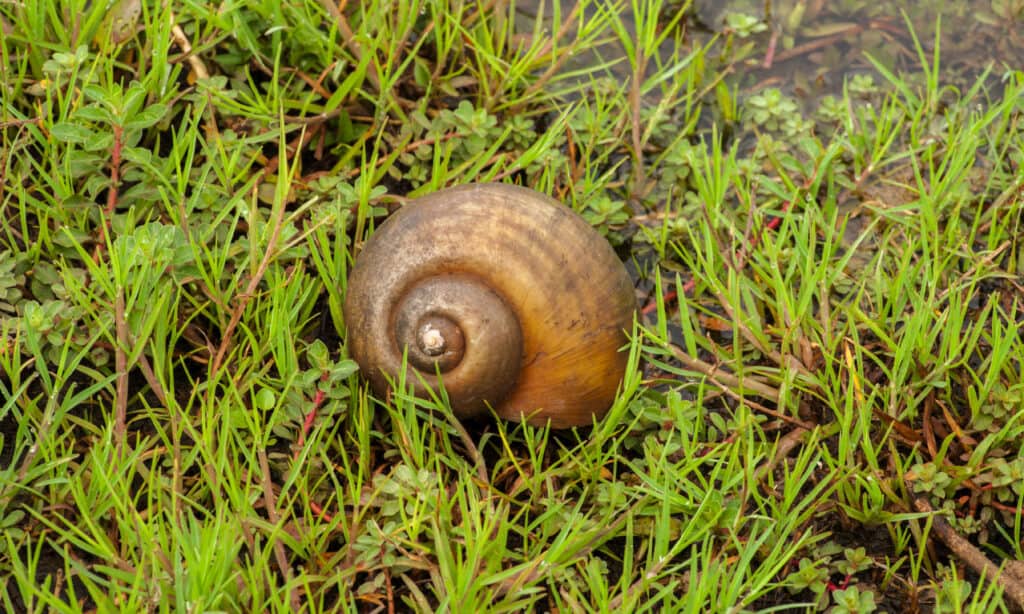
Snail shells display bilateral symmetry, spiraling either to the right or the left.
©Asian Images/Shutterstock.com
Snails have a wide variety of sizes, shapes and species, and serve a key role in our environment. Not only are they a natural fertilizer, but they also help maintain ecosystems for other animals. Their slime is also becoming increasingly popular in cosmetology, used for both products and procedures. There are a lot more incredible facts about these slimy beauties. So, let’s learn more about these amazing creatures!

1. There Are Over 40,000 Different Types of Snails
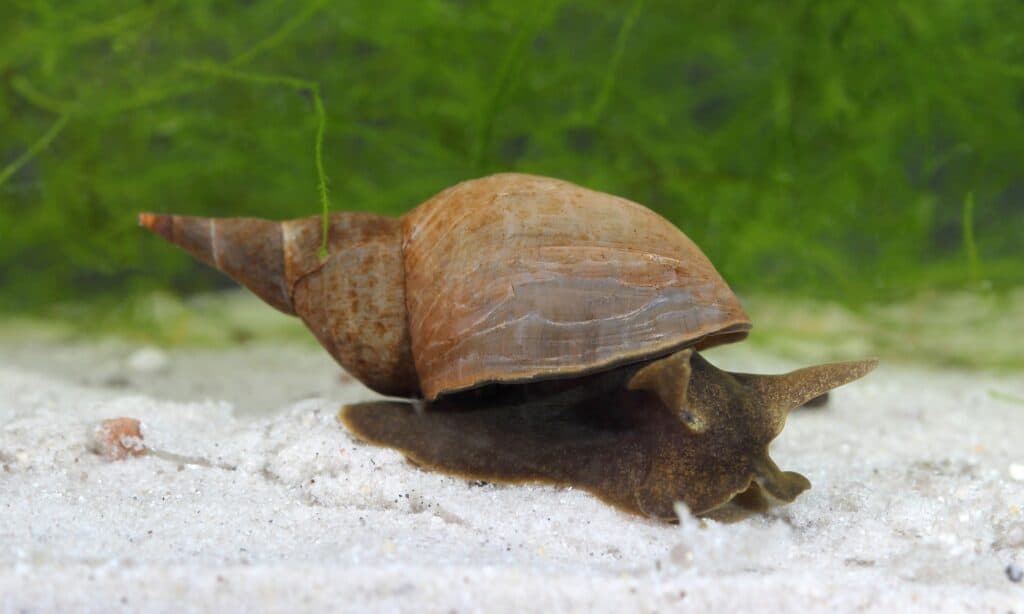
The pond Snail (
Lymnaea stagnalis) is one of over 40,000 species of snails!
©iStock.com/VitalisG
Many people are familiar with garden snails. However, most of us don’t know that there are a ton of different snail species in the world. In fact, there are over 40,000 distinct species of snails! They vary in size, colors, and even location. Snails can range anywhere from less than 1 inch in size to over 15 inches in size. They can also live in many different habitats, both on dry land and in water.
2. They Can Live in Seawater, Freshwater, or on Land

The astrea snail is a saltwater species, but there are many species that prefer land or freshwater.
©iStock.com/vojce
Both common snails and exotic species can be found on land. But there are also snails that can live in seawater and freshwater. Sea snails are composed of an exceptionally large group of snails that live in salt water. These snails can also have very colorful shells, which are often disguised as rocks to deter predators. Freshwater snails are a large group of snails that live in ponds, lakes, and rivers. Not only do they have gills, but they also feature a range in sizes. There are roughly 4,000 distinct species of freshwater snails in the world. Land snails, on the other hand, have a much larger group and tend to grow quite big!
3. The Giant African Land Snail is One of the Largest Snails in the World

The largest giant African snail measured over 15 inches!
©Olena Kurashova/Shutterstock.com
The biggest snail in the world is a land snail. The giant African snail can grow over 7 inches long, with the largest specimen measuring at just over 15 inches. They have large, light to dark shells with vertical dark stripes on them. These snails are considered an invasive species, feeding off at least 500 diverse types of plants. Unfortunately, these snails are carriers of a parasite that causes meningitis, posing a threat to both humans and other animals.
4. The Smallest Snail in The World is Less Than 0.03 Inches

The smallest snail is even smaller than the one pictured here. It cannot be seen with the naked eye.
©karegg/Shutterstock.com
The smallest snail in the world is a micro mollusk. A tiny, translucent shelled snail that has been measured to reach just under 0.03 inches total in size. This snail was found in Borneo and has been named Acmella nana, which translates to dwarf in Latin. Because this snail is so incredibly small, scientists must observe them under a microscope. This species was found on a limestone hill. Experts say there could be at least 500 species of this tiny snail in the world.
5. They Are Not Mammals or Reptiles

The spotted nerite snail (
Neritina natalensis) features a striking shell.
©iStock.com/Juan Carlos Juarez Jaramillo
Snails are called gastropods. Gastropods are a form of mollusk that include snails, slugs, and whelks. It is one of the most diverse groups of organisms, home to over 40,000 distinct species. They also belong to the invertebrate class, a group of organisms that do not have a spine or skeletal system. Therefore, the shell of a snail is so important. It serves as a home, a defense mechanism, and as a form of protection for their fragile bodies.
6. They Have Teeth, Many Teeth!
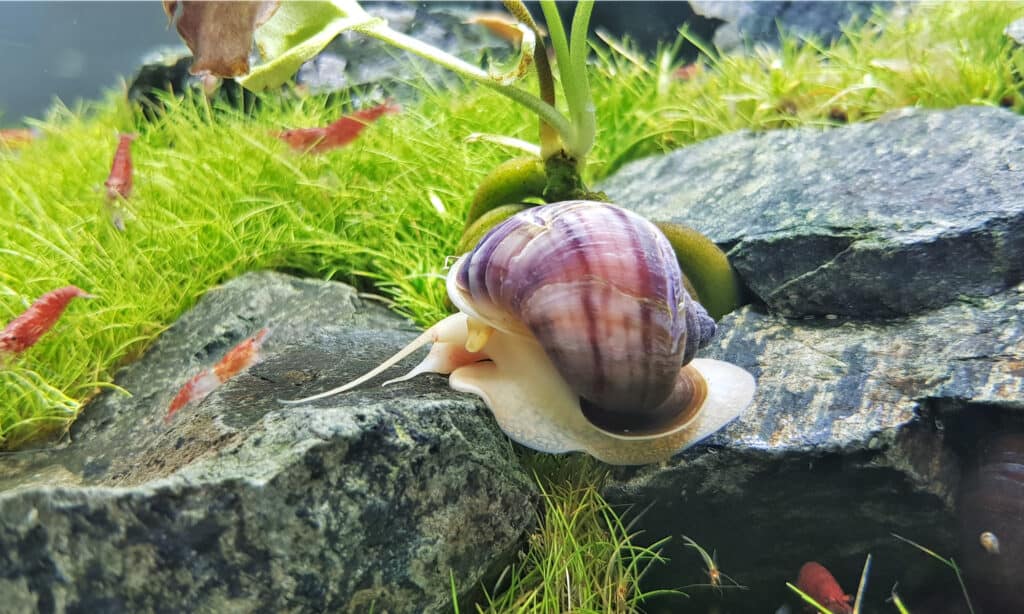
Snail teeth are tiny, but they have many of them, used to scrape and cut their food.
©Arunee Rodloy/Shutterstock.com
While snails have tiny mouths, they still have teeth. A lot of them. In fact, some snails have over 20,000 teeth, while the average snail has about 1,000. These teeth are practically microscopic and obviously aren’t very sharp when compared to those of other animals. They are used for both scraping or cutting food. Their teeth form inside a structure in their mouths called a radula, an elongated sack.
7. They Retreat into Their Shell When a Threat is Nearby
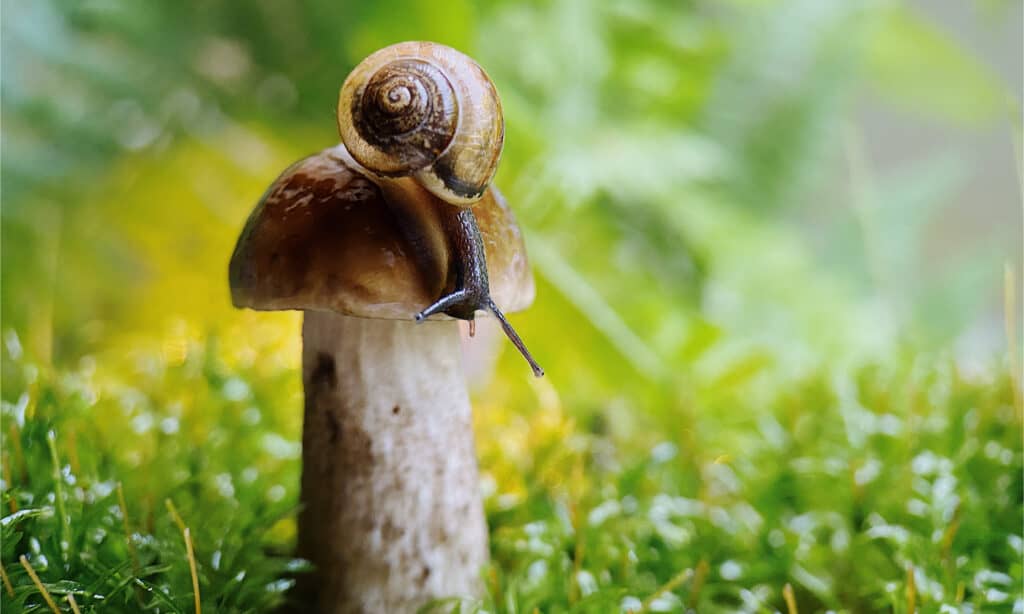
Snails extend out to explore their world, but quickly retreat into their shells’ safety if there is a threat.
©Anna Seliaeva/Shutterstock.com
Because snails do not have backbones or a skeletal system, they are obviously vulnerable to animals in the wild. Their shells are their greatest defense mechanisms. In fact, whenever a threat is posed nearby, they often retreat inside their shells for protection, much like a turtle. Their shells can also protect them from elevated temperatures.
8. Most Snails Are Hermaphrodites
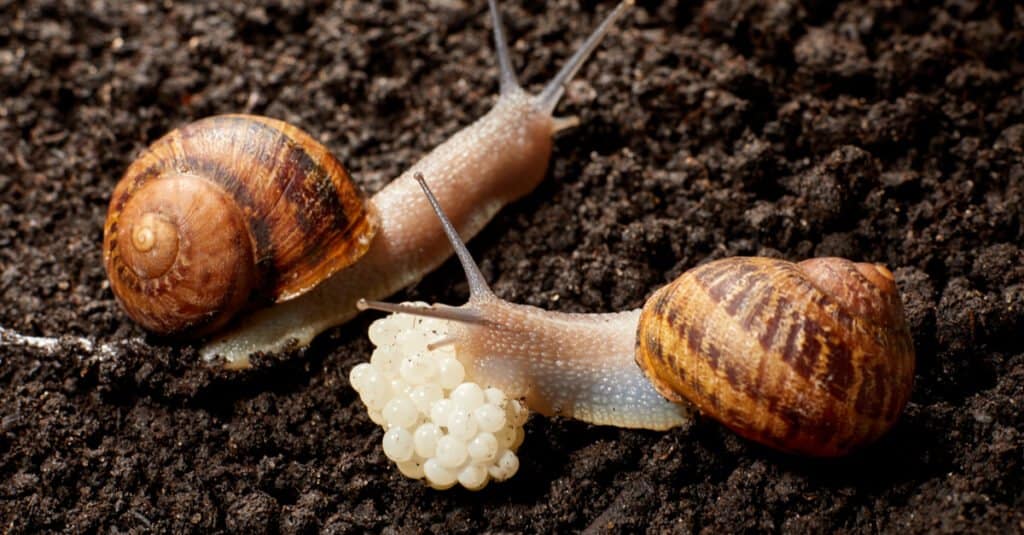
Many snail species are hermaphroditic and can reproduce on their own.
©Zebra-Studio/Shutterstock.com
There are many species in the world that can reproduce on their own and do not have genders and snails are one of them. Most are not male or female and can produce both eggs and sperm on their own, however, some snails that belong to different families can be male or female. They can reproduce when they are sexually mature and when their sexual organs acquire necessary conditions. The time varies for all snails, mostly due to their location and environments.
9. Their Shells Grow with Them
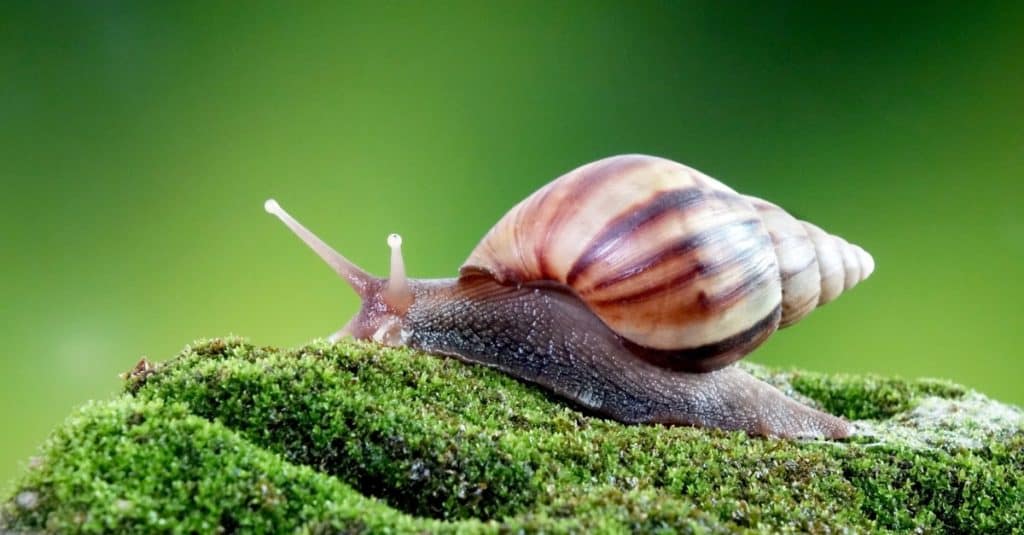
Snails don’t discard their shells when they outgrow them, as hermit crabs do. Their shells grow with them!
©Mark Brandon/Shutterstock.com
Every snail has a shell and unlike many other shelled creatures, snails do not discard their shells and form new ones. In fact, as snails grow, their shells grow with them! Their growth begins while they are still inside of the egg and when they are born, they already have their shells. To make their shell strong, snails are constantly in search of calcium-rich food sources to produce a strong and sturdy shell for their fragile bodies to grow into.
10. They Participate in Snail Races

People often set up snail races for entertainment.
©iStock.com/Aleksandr Zyablitskiy
While snails are typically slow creatures, there are still snail races that are held everywhere in the world. Snail races are used as a humorous form of entertainment, obviously because these guys don’t move at a fast pace, and they are incredibly fun to watch. While it is possible for other species of snails to participate in these races, the garden snail is the most common snail used for snail races. The record-holder was a snail named Archie and he won the race in two minutes’ time, not so slow after all!
The photo featured at the top of this post is © Stepan Bormotov/Shutterstock.com
Thank you for reading! Have some feedback for us? Contact the AZ Animals editorial team.



